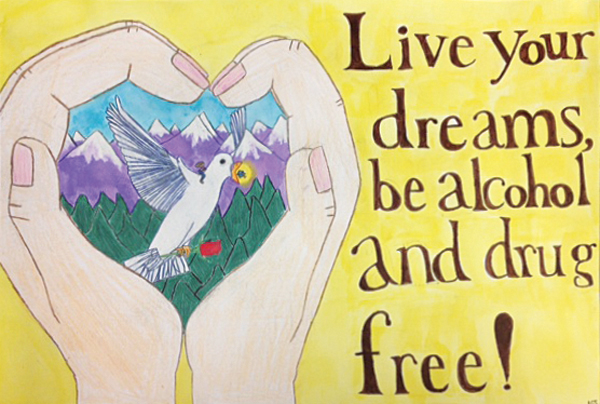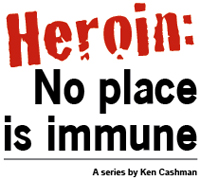
 A couple driving through Cornwall started to fight because he wouldn’t take her to get heroin.
A couple driving through Cornwall started to fight because he wouldn’t take her to get heroin.
A few days later, a parent called the Cornwall Police to get help for an adult son with a heroin addiction.
And during the same week, we had another visitor at the Local who told us that there’s been heroin in the community for years.
No place is immune. And Cornwall is not an exception. But, usually, the presence of drugs is connected to an increase in crime, as addicts steal to support their habit.
That doesn’t seem to be happening here. The crime rates have been level. And there have been only two series of larcenies (one in the Town and one in the Village) that have been related to an addiction.
St. Luke’s Cornwall Hospital has seen an increase in heroin overdoses. That’s consistent with the trend across the region. But given short notice, the hospital couldn’t say how many overdose patients had been treated in the Cornwall Emergency Room and how many had come from Cornwall.
This is the final part of our series. The people we spoke to experienced addiction at its worst. They told us about long-term programs that appeared to be helpful. One of them in Flagstone, Ariz. is called “Back to Basics.” It involves a year of rugged outdoor activity with very little time for family interaction.
A person who visited the program was amazed at the difference between the six-month veterans and the newcomers. He said that those who had just arrived had rings under their eyes and looked as pale as ghosts. By comparison, those who had been in the program looked like tanned triathletes.
Long Island Teen Challenge and Women at the Well in Tennessee are spiritually based programs. We learned about them from Caylah Matos, whose father recently published a book about addictions and spirituality.
The Teen Challenge has been around for a half century. Its mission is to plant seeds of hope in detox patients. Women at the Well includes a comforting message on its website. “If you are seeking help with any type of life controlling problem,” it says, “you have come to the right place.”
We learned about a few places closer to home that are intended to be helpful. District Attorney David Hoovler recommends the Alcoholism and Drug Abuse Council (ADAC) of Orange County (294-9000). It serves county residents and “addresses substance abuse as a health condition that affects the individual, the family and the community.”
The school district has referred students to RESTART, a program operated by Orange/Ulster BOCES and Catholic Charities of Orange County. Among its services, RESTART helps adolescents make the transition back to school after they have received treatment.
But while help is available, the wisest option is to avoid habits that can lead to heroin. Most everyone points a finger at painkillers, which are often prescribed in large quantities. During a recent traffic stop, the Town Police found a prescription for 150 of them. The officers assumed the prescription was forged, but it wasn’t.
Another person told us about a prescription that was so large, the pharmacy didn’t have enough pills to fill it.
The district attorney has seen heroin addicts of all ages. But, in writing this article, our experience has been limited to people who got hooked in their teens after experimenting with pills that were easy to obtain.
Stu Green (not his real name) was one of them. He has been mentioned in every part of the series. “A lot of kids did the same things,” his older brother told me. “but only a few got hooked and moved on to the point that Stu did. I knew people who pushed hard, but it never grabbed them.”
Who does it grab? Who is most likely to get hooked? No one seems to know. At least, no one told us. What family members did tell us is that they learned the signs of addiction — in some cases, much later than they would have liked.
“You know when something isn’t right,” a woman admitted. “You see the weight loss, the bags under their eyes, the sudden mood swings, the nodding off in the midst of a conversation. But mostly it’s a mother’s intuition.”
There were other signs of addiction in that household, family possessions that were suddenly missing. A pair of retired policemen assured me that’s a clue. “It’s tough for a family to stand by,” they told me, “because an addict will rob anyone.”
But our final visitor is standing by. She came to the office a few weeks after the series started. She thought that maybe her experience could help someone in the community. “I’ll never give up,” she told us. “It’s heartbreaking to lose your child to drugs.”

